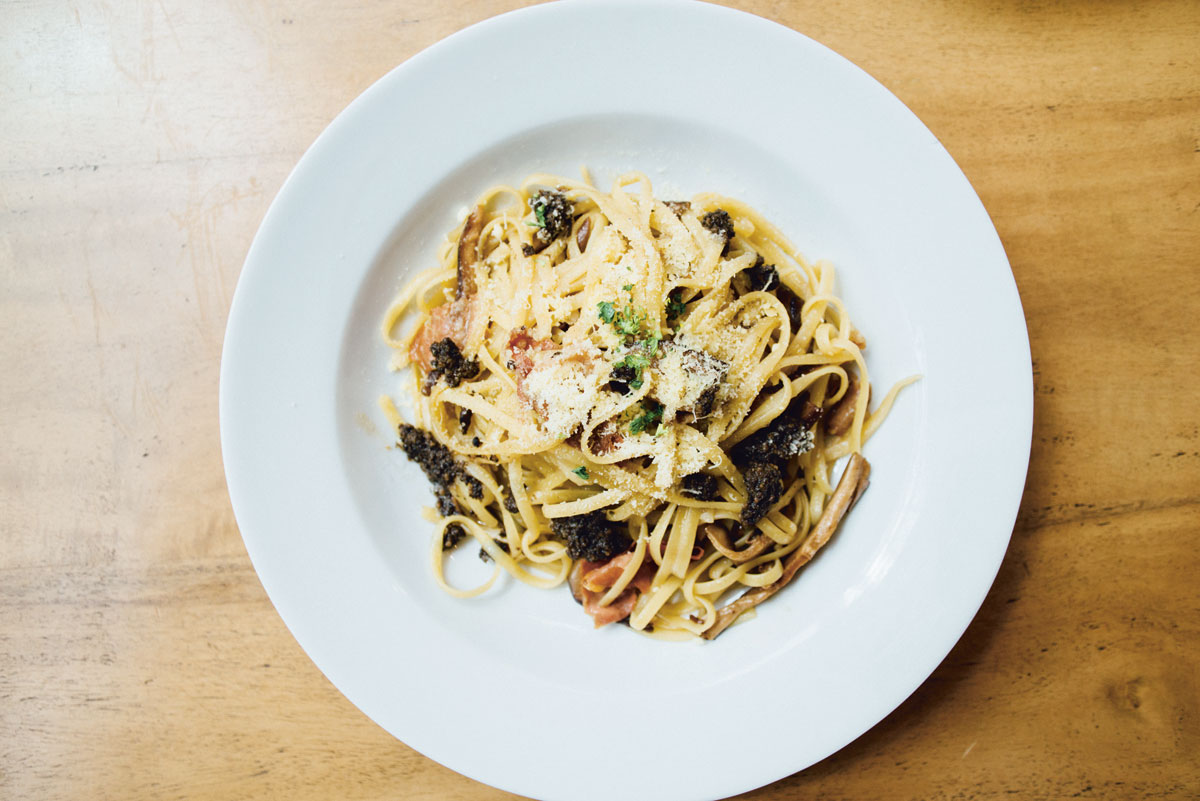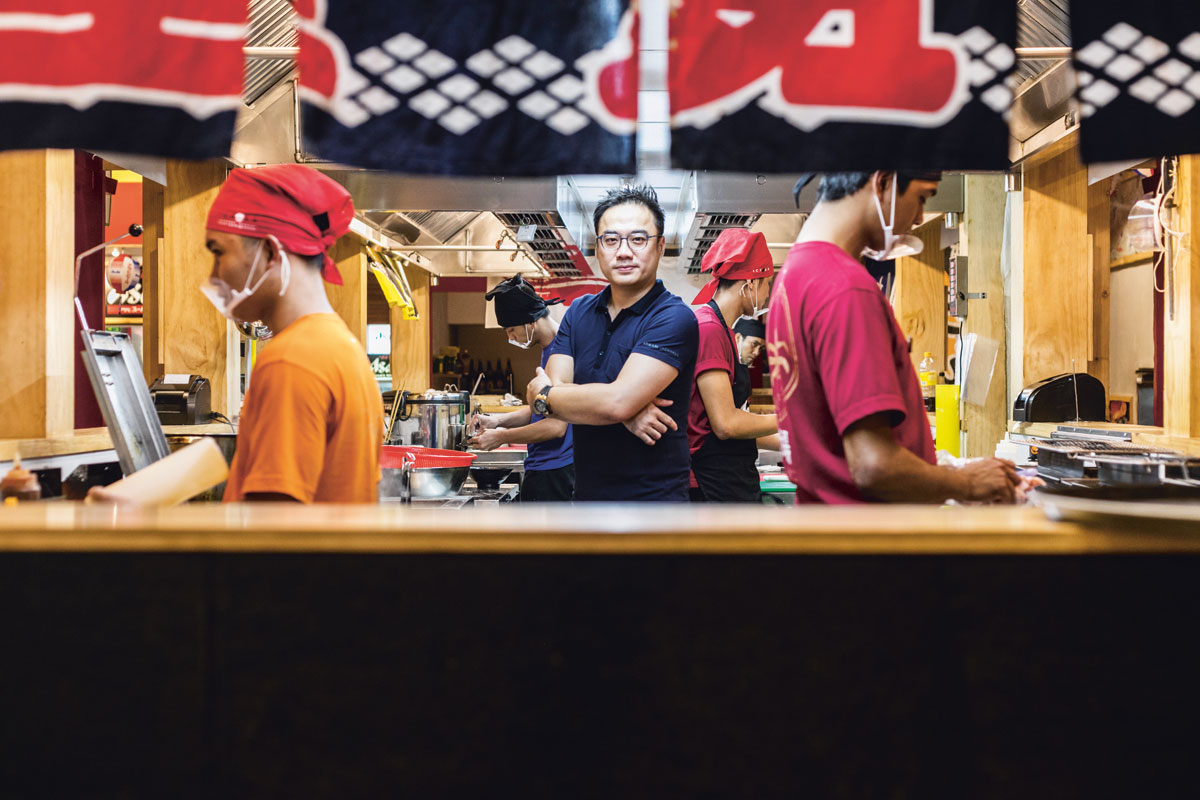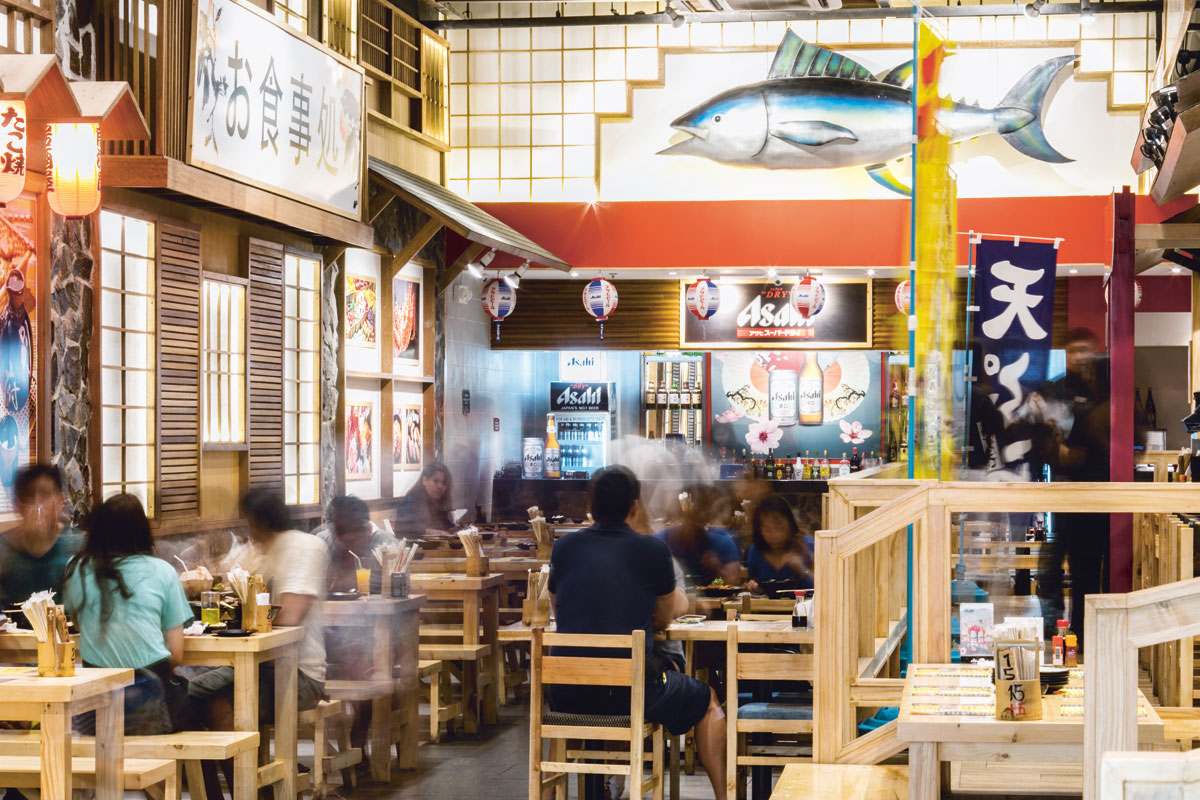It all begins with an idea. You have one, two, maybe a few you think are worth pursuing. It’s something novel. The next big thing in the industry. Something that fulfills a need you may have had a hard time satisfying. You work hard on your project, pursuing your vision, making your mark in the market until your brand catches the attention of conglomerates that want to enter into a business deal that will make you want to let go. Then you start all over again.
This is exactly what happened in the cases of Red Ribbon’s hardworking founder Teresita Moran, who is now expanding their Amici and Cara Mia branches, and Teriyaki Boy’s imaginative former owner Bryan Tiu, who is constantly launching new restaurant concepts under his iFoods brand. Both have allowed buyouts of their previous brands and are now applying the lessons of their past passion projects into new brands.
Back to perfection
It was a busy afternoon for Moran. Their Cara Mia branch was doing brisk business, serving scoops of their signature creamy gelatos for those looking to cool off and coffees for those who want to wind down. She and her sons Philip, the general manager, and Paolo, the executive chef, are on hand and in attendance at the interview to help fill in the gaps about their family’s former business and the new ones they are now operating.

She proffers cheerful anecdotes about how Red Ribbon started. “I was always entrepreneurial, as my mom already had a food business going. She was selling native delicacies while I wanted to go into baking, inspired by the favorite bakeshops of my childhood. In the early ’70s, there were no culinary schools like what we have now. What I would do was to take classes that were held in the houses of home bakers.”
“We found out that the ad was actually for a supermarket located somewhere else,” says Teresita Moran. While we were talking to the owner of the building, my mother made a decision to take the space instead. She signed and gave a downpayment then and there. That was how much she believed in me.”
Her first goal was to sell goodies from home, which she did to her mother’s friends. “I was just out of college at the time so my friends would not have the spending power. My first customers were my titas,” she grins. Her first products were espasol and empanaditas—pastries stuffed with cashews and condensed milk filling.
She was heavily influenced by her mother’s business but she wanted to upgrade. “I didn’t want to get stuck with Filipino kakanin, which is why I wanted to learn baking. One of the first cakes I sold was chocolate cake because I really liked the cake of this shop called Cookie Monster.”
Determined to take her home business further, she and her mom decided to look for a space to sell her cakes and pastries. They found an advertisement for a grocery along Timog Avenue and decided to inquire about renting a stall. “We found out that the ad was actually for a supermarket located somewhere else. While we were talking to the owner of the building, my mother made a decision to take the space instead. It was all of 32 square meters. She signed and gave a downpayment then and there. That was how much she believed in me.”
Dessert domination
It was a rocky start for them back in 1979. Some days, she would clear only P800. But then, her reputation grew among the Quezon City folk. “I guess because we brought the ‘sosyal’ Makati vibe to the north at an affordable rate. People started flocking to us.” Soon, they had lines for their cakes and their dine-in section. They bought the adjacent 200-square meter space and soon, even that was not enough.
“I remember, during Christmas time, when the delivery truck arrived, bumubusina pa lang siya, pumipila na ang mga tao.” Soon after, they expanded to several locations and started franchising.
“I felt that franchising was the way to grow,” says Teresita Moran. By the time we sold to Jollibee, we had 140 branches in the Philippines, with Red Ribbon present all the way in the U.S. with 20 branches.”
While things seemed to go smoothly, she was thrust into another challenge. The family moved to the U.S. when politics started getting problematic in the country in 1984. Some family members stayed behind to run Red Ribbon and she decided to open a branch in Los Angeles.
“The ingredients were not familiar. Iba ang performance ng flour. It was hit-and-miss.” With her perseverance and what she calls God’s help, she was able to establish the brand overseas and it was even cited by the L.A. Times for its bestselling mango cake.
All the while, the company was franchising their branches and learning the ropes as they went along. “I felt that franchising was the way to grow. By the time we sold to Jollibee, we had 140 branches in the Philippines, with Red Ribbon present all the way in the U.S. with 20 branches.”
Sweet success
Now, there are 19 Cara Mia and Amici branches in total and they are beginning to offer franchising as well. “When we started franchising Red Ribbon, we chose the people we partnered with. We were careful about the quality of the products. We would be very careful with the standards. We taught them forecasting and would have frequent visits to the stores to make sure that our policies were being implemented.” To this day, she jokes with her husband about going into a Red Ribbon and asking about expiry dates on the cakes.
They were looking into ice cream cakes at the time Jollibee made an offer, and it inspired them to look into Amici and its gelato later on. “When we started Amici, I guess the mindset was to just do exactly what we were doing in Red Ribbon, but we realized that nothing is set in stone and exactly the same.”
There had to be changes. Red Ribbon had 150 locations and a central commissary, while Amici and Cara Mia’s are about authentic Italian cuisine and needed more flexibility with culinary experimentation. They also reach a different market segment. “What we really kept are our standards of quality and consistency,” she says.

Moran has been and continues to be hands-on with her business. “We have always carried on quality, honesty, and integrity. We are always honest in our dealings and we like to take care of our people.” They have instituted values formation and family enrichment classes for their employees, she reveals. The end goal is not just to promote good customer service but also to make sure that their employees live fuller lives.
Her advice to would-be food entrepreneurs: “It’s okay to dream, but you always have to learn to work on it yourself. That is how I started it. Some people have the money or the means so they get someone else to set up or run their business. For me, it was important to personally understand and really love what I am doing.”
Moran is currently looking into offering more cakes at Cara Mia and things are looking sweeter.
Serially entrepreneurial
As the president and CEO of iFoods, Tiu has several restaurant concepts in his portfolio. His venture into food started when he was a cocky college kid—and for a reason that is hilariously epic.
“My family has a textile business in Divisoria. During summer, I would be constrained to work there. I was frustrated kasi ang traffic and I would have to pass through the wet market to get there. Tapos, walang aircon. That gave me the drive and inspiration to go into a food business kasi may office and aircon,” he grins.

When he was in his third year of university, he picked up a Domino’s Pizza franchise. This grew to four stores until he, as with many others, was hit by the Asian financial crisis. “That crash and burn was my master’s degree in the food industry.” At 21, armed with the resilience of youth, he started another venture. This time, he was looking to strike out on his own. “When you are a franchisee, there are a lot of limitations,” he explains. He studied the market and noticed that there was a gap when it came to Japanese food.
“I look at the market and I look at what is going on abroad and see if I can adapt what is there. What I look for is flexibility to gear the brand towards what is acceptable to the local market. We look for a business that is a little complicated,” Bryan Tiu says.
“You had your pricey high-ends like Sugi and the other restaurants with unpronounceable names, then fast food places like Tokyo Tokyo. I wanted to be in the middle with fast casual.” A friend from Canada mentioned that the popular places there were Sushi Boy and Teriyaki Experience, so he came up with Teriyaki Boy. “Galing ka sa lugi so medyo kinakabahan ka, so all I wanted was one successful store,” he recounts. He was 23 at the time.
Surprise hit
His concept struck gold and soon he began to expand. “Tinamaan ko ‘yong 5Ps of Marketing (product, place, promotion, price, and profit), and went on from there. It was a good break. It offered what people were looking for, which is a casual Japanese restaurant with relatable offerings.” His company grew from an office staffed by two people to 10 company-owned branches by 2005.

It happened that one of their satisfied customers turned out to be Martin Lorenzo of the Pancake House Group. “I guess if you are looking into selling your business, it helps if you are located kung saan nakatira ‘yong owner of the bigger group,” he chuckles.
A meeting was set, their portfolio was looked into, and the Pancake House Group made an offer. “It was a good offer, from an entrepreneurial mom-and-pop operation like ours. They were going to have more structures in place and it will be part of a stronger company,” he muses. Tiu eventually signed over 70 percent of their shares.
“I was lucky to have gone to the Domino’s headquarters in the US to train for a month. I realized the importance of having mentors in operations and finance and making professional friends. I am just an entrepreneur. I need people who can guide me,” shares Bryan Tiu.
He has since hung on to another concept, Tokyo Café, which he started in 2006, and built other brands under his iFoods venture. His next order of business was starting the peri-peri chicken craze. “An Australian friend who hangs out at Angeles City told me about this good chicken place there. I remember him asking me, ‘You Filipinos like chicken, right?’ So, I checked it out. It turns out that I had already met a supplier for the spices at one of the food shows I attended, and things went on from there. Our Peri-Peri Charcoal Chicken is the first in the country.”
Among the lessons he learned was to give value to training. “I was lucky to have gone to the Domino’s headquarters in the U.S. to train for a month. I realized the importance of having mentors in operations and finance and making professional friends. I am just an entrepreneur. I need people who can guide me.”
None like the other
His business strategy is to seek the unique and that is exactly what he offers in his concepts that include Japanese restaurant Wafu, Korean Kogi Bulgogi, and his latest, a Japanese market-style eatery called Ichiba at Resorts World Manila. “I look at the market and I look at what is going on abroad and see if I can adapt what is there. What I look for is flexibility to gear the brand towards what is acceptable to the local market. We look for a business that is a little complicated.”
He ponders the question about business mistakes he may have made in the past, and admits that he was his own greatest hindrance. “There might come a point where you tend to lose focus and feel na magaling ka sa lahat. You also have to make sure to get the right people. Another challenge is watching your numbers. ‘Yan ang hindi ko alam dati. All I thought was kapag happy ‘yong customer at masarap ‘yong pagkain, everything is okay. I guess my lessons learned would be focus and adaptability. When trends start to shift, you have to go and identify those changes and let go of complacency.”
Originally published in F&B Report Vol. 13 No. 4




